Comments / Questions (9)
![]() Sylvie wrote:
Sylvie wrote:
Bonjour, Je ne comprends pas pourquoi on demande de tricoter jusqu'à 40 cm (M) de hauteur totale, alors que le paragraphe suivant commence pour les emmanchures en disant : À 36 cm (M) de hauteur totale. Peut-on m'éclairer? Merci! Sylvie
03.12.2025 - 20:00DROPS Design answered:
Bonjour Sylvie, cette partie que vous décrivez correspond au point fantaisie, autrement dit, comment on doit tricoter, en même temps, vous devrez former les emmanchures, à 36 cm en M et l'encolure, à 47 cm, et le biais des épaules à 55 cm. Bon tricot!
04.12.2025 - 08:55
![]() Louisette wrote:
Louisette wrote:
Avez vous le patron en français
02.07.2021 - 20:47DROPS Design answered:
Bonjour Louisette. Ce modèle : https://www.garnstudio.com/pattern.php?id=55&cid=8 Bon tricot!
04.07.2021 - 16:04
![]() Fernande wrote:
Fernande wrote:
Bonjour. pour le modèle 90-20 j'ai fait le POINT DE FANTAISIE jusqu'à 38 cm. EMMANCHURE commence à 34cm.... Faudrait-il que je commence l'EMMANCHURE durant le POINT DE FANTAISIE.....???? Comment faire...Aidez-moi s.v.p.
13.05.2021 - 04:55DROPS Design answered:
Bonjour Mme Fernande, vous avez toute a fait raison. L'EMMANCHURE commence durant le POINT DE FANTAISIE. Comment diminuer pour les emmanchures vous trouverez dans la partie: 'Emmanchures'. Jetez un coup d'oeil sur la photo. Bon tricot!
13.05.2021 - 15:46
![]() Sabine LAPLANA wrote:
Sabine LAPLANA wrote:
Bonjour ! Puis-je remplacer sur le modèle DROPS 90-20 le fil Muskat par 2fils drops YOU 9 pour garder le côté chiné du modèle et en quelle quantité en taille S ???? merci de me répondre en français si vous le pouvez !! Merci d'avance ! Sincères Salutations.
11.05.2020 - 13:51DROPS Design answered:
Bonjour Mme Laplana, DROPS loves you 9 est un fil du groupe A et n'est donc pas une alternative à DROPS Muskat qui appartient au groupe B - vous trouverez ici plus d'infos sur les alternatives. Bon tricot!
11.05.2020 - 16:34
![]() Sabine LAPLANA wrote:
Sabine LAPLANA wrote:
Bonjour ! Pour le modèle DROPS 90-20 réalisé en Muskat et Glitter, je voudrais savoir si je peux le remplacer par 2 fils en Drops YOU 9 et et combien de Pelotes en taille S ??? Merci d'avance ! Sincères Salutations.
11.05.2020 - 12:11DROPS Design answered:
Bonjour Mme Laplana, DROPS Loves you 9 appartient au groupe de fils A et ne peut pas conséquent pas se substituer à DROPS Muskat qui est du groupe de fils B. N'hésitez pas à utiliser notre convertisseur pour trouver des alternatives. Bon tricot!
11.05.2020 - 12:49
![]() Ceciel Mannens wrote:
Ceciel Mannens wrote:
Bij patroon 90-20 staat drops glitter 02-05-06-07. Deze staan niet in het besteloverzicht. Kunnen jullie mij helpen hierbij?
02.05.2020 - 15:44DROPS Design answered:
Dag Ceciel,
Hiervoor kun je het beste even contact opnemen met je verkooppunt.
05.05.2020 - 12:15
![]() Maud wrote:
Maud wrote:
Si le glitter n'est plus disponible par quoi nous conseillez-vous de le remplacer ?
28.06.2019 - 15:47DROPS Design answered:
Bonjour Maud, DROPS Glitter est toujours disponible, mais désormais uniquement en or et argent, vous pouvez ainsi utiliser 4 fils Glitter, ou aucun si vous ne souhaitez pas le côté brillant, ces fils sont très fins et ne changeront pas la tension. Bon tricot!
01.07.2019 - 06:39
![]() Olga wrote:
Olga wrote:
Qué me recomendáis para sustituir el hilo glitter?
28.05.2019 - 13:22DROPS Design answered:
Hola Olga. El hilo Glitter solo aporta brillo a la prenda. Por lo que puedes trabajar solo con Muskat. Puede ser que necesites usar una aguja más pequeña para obtener la tensión del tejido recomendada.
28.05.2019 - 22:33
![]() Berit Aas wrote:
Berit Aas wrote:
Hvor får man kjøpt glittertråden i de farger som står i oppskriften?
24.01.2016 - 22:07DROPS Design answered:
Hej. De färgerna har dessvärre utgått ur vårat sortiment, Glitter finns nu endast i röd, guld och silver.
25.01.2016 - 13:57
DROPS 90-20 |
|
|
|
|
DROPS Top in Muskat and Glitter
DROPS 90-20 |
|
|
Gauge: 17 sts x 22 rows on larger needles with 1 strand Muskat + 4 strands Glitter in stockinette st = 10 x 10 cm. Knitting tips (for armhole): All decs are made on right side rows. Dec 1 st inside of 2 edge sts in garter st as follows: After 2 edge sts: Slip 1 st as if to knit, K 1, psso. Before 2 edge sts: K 2 tog. Front: Cast on 58-65-72-79-87-96 sts on smaller needles with 1 strand Muskat and 1 strand of each color Glitter (= 5 strands). Knit 4 rows garter st, change to larger needles and stockinette st, keeping the 2 outermost sts at each side in garter st for side split edge. When the piece measures 6 cm end side split and cast on 1 new st at each side for seam allowance = 60-67-74-81-89-98 sts. Continue in stockinette st keeping 3 sts in garter st at each side for 4 rows, then knit stockinette st over all sts. Read the entire section before continuing: Side incs: When the piece measures 10 cm inc 1 st at each side. Repeat inc when the piece measures 18 and 24 cm = 66-73-80-87-95-104 sts. Pattern: When the piece measures 25 cm K 2 rows (first row wrong side row), then P 2 rows, then K 1 row, then knit reverse stockinette st (as seen from the right side) until piece measures 38-39-40-41-42-43 cm. Then K 2 rows (first row on right side), then P 2 rows, K 2 rows, then continue in stockinette st to finished dimensions. Armhole: When the piece measures 34-35-36-37-38-39 cm knit 4 rows with garter st over the outermost 5-5-5-6-7-9 sts at each side. Then bind off the outermost 3-3-3-4-5-7 sts at each side for armhole. Continue to dec 1 st for armhole at each side every other row – see knitting tips above: 2-4-6-8-9-11 times = 56-59-62-63-67-68 sts. Continue with the 2 sts in garter st at each side to finished measurements. Neck: When the piece measures 44-46-47-48-50-51 cm bind off the center 14-15-16-17-19-20 sts for the neck. Then bind off at each neck edge every other row: 2 sts 2 times and 1 st 4 times = 13-14-15-15-16-16 sts remain on each shoulder. When the piece measures 51-53-55-57-59-61 cm bind off for sloped shoulder as follows: bind off the outermost 6-7-8-8-8-8 sts from side edge, continue over the remaining 7 sts, knit 1 row back and then bind off. The piece measures approx. 52-54-56-58-60-62 cm. Back: Cast on and knit the same as the front. Bind off for armhole as on front. Continue until piece measures 50-52-54-56-58-60 cm. Now bind off the center 28-29-30-31-33-34 sts for the neck. On the next row dec 1 st at each neck edge = 13-14-15-15-16-16 sts remain on each shoulder. When the piece measures 51-53-55-57-59-61 cm bind off for sloped shoulder as on front, the piece measures approx. 52-54-56-58-60-62 cm. Assembly: Sew shoulder seams. Neckband: Pick up approx. 82-100 sts around the neck on smaller short circular needles with 1 strand Muskat and 1 strand of each color Glitter (= 5 strands); join and knit as follows: P 1 row, K 1 row, P 1 row, and then K and bind off all sts. Sew side seams using edge sts as seam allowance, leaving bottom 4 rows open for side split. |
|
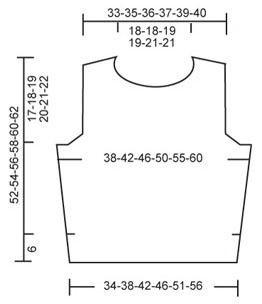 |
|
Have you finished this pattern?Tag your pictures with #dropspattern or submit them to the #dropsfan gallery. Do you need help with this pattern?You'll find 18 tutorial videos, a Comments/Questions area and more by visiting the pattern on garnstudio.com. © 1982-2026 DROPS Design A/S. We reserve all rights. This document, including all its sub-sections, has copyrights. Read more about what you can do with our patterns at the bottom of each pattern on our site. |














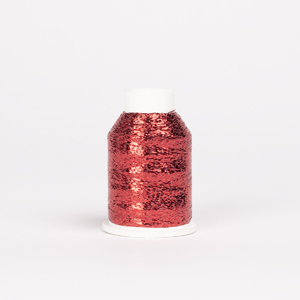































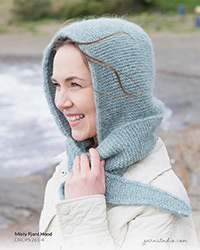
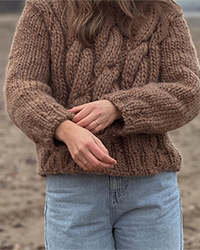

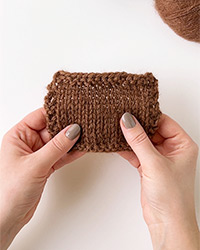
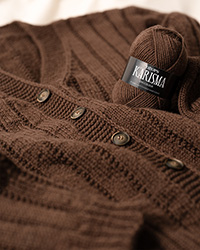
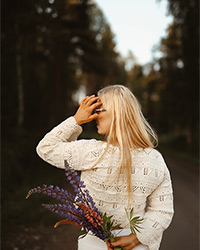
Post a comment to pattern DROPS 90-20
We would love to hear what you have to say about this pattern!
If you want to leave a question, please make sure you select the correct category in the form below, to speed up the answering process. Required fields are marked *.